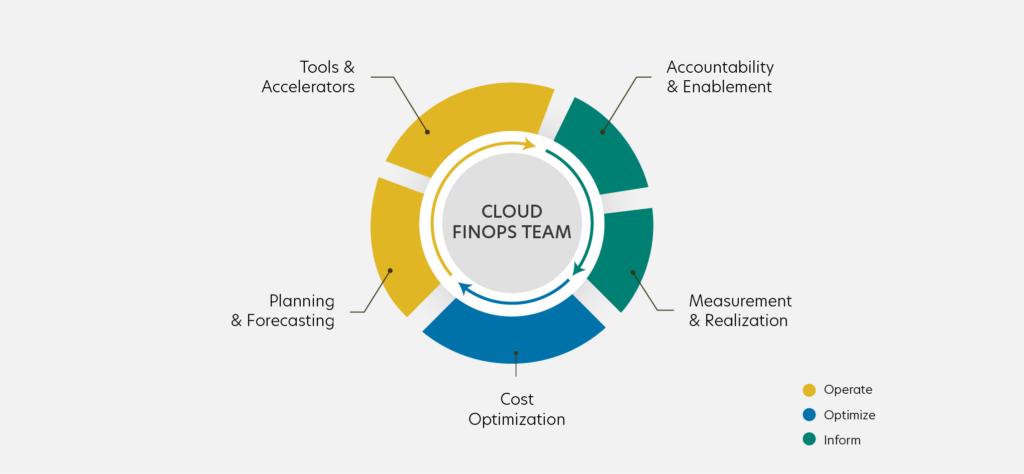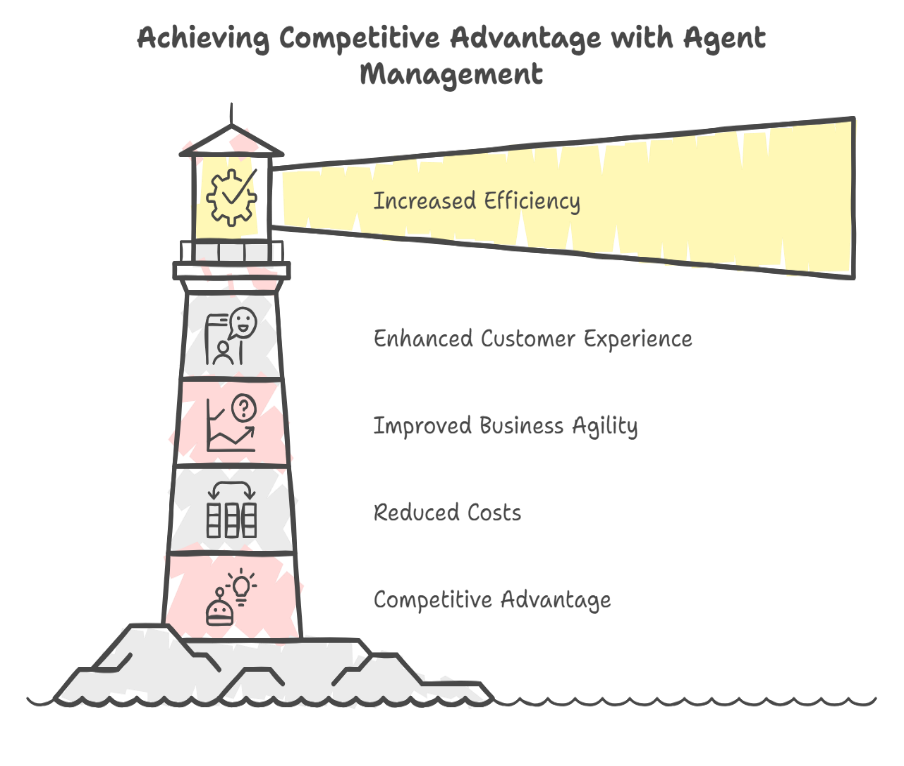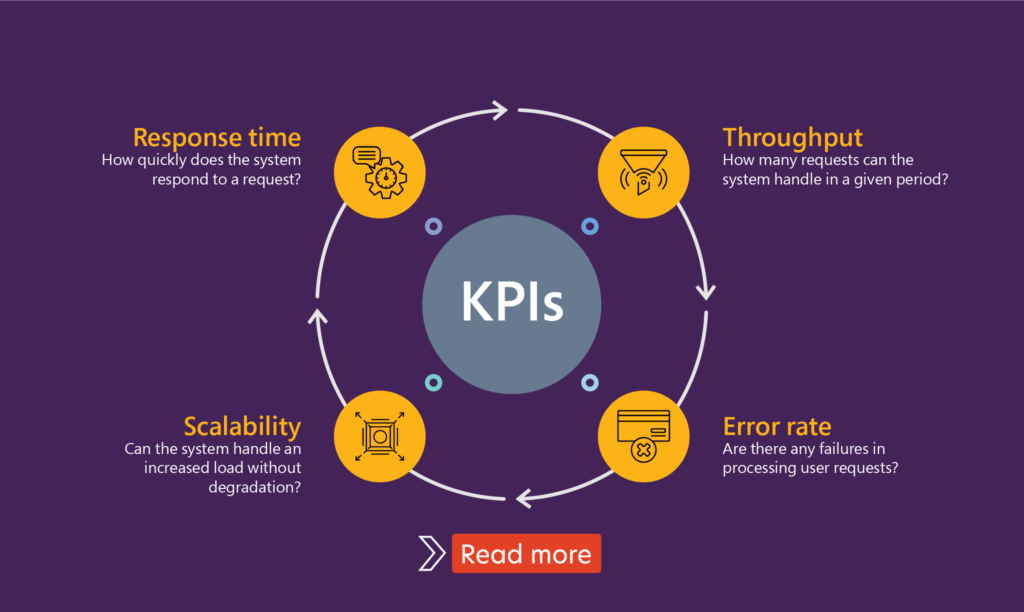Accelerate IT operations with AI-driven Automation
Automation in IT operations enable agility, resilience, and operational excellence, paving the way for organizations to adapt swiftly to changing environments, deliver superior services, and achieve sustainable success in today's dynamic digital landscape.
Driving Innovation with Next-gen Application Management
Next-generation application management fueled by AIOps is revolutionizing how organizations monitor performance, modernize applications, and manage the entire application lifecycle.
AI-powered Analytics: Transforming Data into Actionable Insights
AIOps and analytics foster a culture of continuous improvement by providing organizations with actionable intelligence to optimize workflows, enhance service quality, and align IT operations with business goals.
Cloud computing has become the backbone of digital transformation, enabling organizations to scale faster, innovate freely, and respond to market demands with agility. But as cloud adoption accelerates, so does the cost. Gartner predicts that the global public cloud spending is estimated to be $723.4 billion in 2025, up from $595.7 billion in 2024. What was once seen as a flexible, pay-as-you-go model is now becoming a complex web of services, usage spikes, and budget overruns.
For many enterprises, the lack of visibility into cloud consumption, combined with decentralized decision-making, leads to wasteful spending, billing surprises, and poor ROI. Traditional cost control methods are no longer sufficient to manage this level of complexity—especially when cloud environments span multiple providers, regions, and departments.
The solution? AI-powered Intelligent FinOps. Unlike traditional cost monitoring tools, Intelligent FinOps brings predictive insights, automation, and cross-team collaboration into cloud financial management. It’s a strategic imperative for businesses aiming to stay agile, competitive, and cost-efficient in today’s dynamic digital landscape.
In this blog, we’ll explore the key aspects of FinOps solutions, their benefits, best practices, and real-world insights on how organizations are leveraging FinOps to drive cloud cost efficiency.
A recent survey found that 48% of M&A professionals are now using AI in their due diligence processes, a substantial increase from just 20% in 2018, highlighting the growing recognition of AI’s potential to transform M&A practices.
The Cloud Cost Challenge:
The cloud promises cost flexibility, but in reality, many organizations are struggling to manage their cloud bills. According to a recent Gartner report, 80% of enterprises will overshoot their cloud budgets due to a lack of cost optimization and governance. The reasons are multifaceted:
- Cloud Sprawl: Unchecked provisioning leads to idle or unused resources.
- Lack of Visibility: Fragmented infrastructure across multiple cloud providers makes tracking usage difficult.
- Complex Billing: Every cloud provider has its own pricing model, often leading to surprise bills.
- Disconnected Teams: Finance, engineering, and operations often work in silos, making it hard to create a unified strategy.
These challenges highlight the need for a collaborative framework that promotes accountability, transparency, and data-driven decision-making—this is precisely where FinOps comes in.
Understanding FinOps: The Foundation of Cloud Financial Management
The Shift from CapEx to OpEx: Why FinOps Matters
In traditional IT, financial planning was straightforward—capital expenditures (CapEx) dictated fixed budgets for data centers, servers, and infrastructure. However, with cloud adoption, costs have shifted to operational expenses (OpEx), making spending unpredictable and difficult to control.

Is FinOps Right for Your Organization?
Your organization needs FinOps if:
- Cloud costs are unpredictable, and budgeting is challenging
- Different teams (engineering, finance, operations) lack visibility into spending
- Cloud adoption is growing, but cost control mechanisms are missing
- Your company struggles with over-provisioned or idle cloud resources
- Finance and engineering teams operate in silos, leading to inefficiencies
- You’re under pressure to optimize cloud spending while maintaining performance
If any of the above apply to your organization, it’s time to implement FinOps.
Three-Phase FinOps Lifecycle

FinOps follows a structured three-phase lifecycle—Inform, Optimize, and Operate—to ensure cost transparency, cost efficiency, and continuous governance.
1. Inform: Gaining Visibility into Cloud Spend
The Inform phase is about understanding and tracking cloud costs in real time to ensure accurate financial management. This phase helps organizations gain transparency into their cloud spend and allocate costs effectively.
Key Actions in the Inform Phase
- Real-time monitoring of cloud spends: Organizations use tools to monitor expenses in real time. For Instance, a company notices that 30% of its cloud spend is on unused storage resources. By monitoring this in real time, they can act quickly and prevent unnecessary expenses.
- Accurate cost allocation using tagging and labeling: Businesses tag resources by project, department, or service to track and allocate costs accurately. According to a Flexera 2024 State of the Cloud Report, 74% of organizations struggle with properly allocating cloud costs due to poor visibility.
- Granular reporting per team, service, or application: Businesses generate detailed reports showing cost breakdowns by team, service, or application.
Why It Matters:
Without real-time monitoring and granular reporting, businesses often overspend on cloud resources.
2. Optimize: Reducing Cloud Waste and Improving Efficiency
Once an organization has visibility into its cloud costs, the Optimize phase focuses on eliminating waste and maximizing resource efficiency.
Key Actions in the Optimize Phase
- Identify underutilized resources (e.g., idle VMs or storage): Cloud providers charge for running instances even when they are idle. Identifying these underutilized resources can significantly cut costs. According to ParkMyCloud, up to 45% of cloud resources are underutilized or idle at any given time.
- Rightsize instances based on usage patterns: Choosing the right instance size (CPU, RAM, storage) based on actual usage prevents overprovisioning. A healthcare analytics firm realizes that their virtual machines (VMs) are oversized, using only 30% of the allocated resources. By switching to smaller instances, they reduce costs by 35%.
- Apply committed use discounts and savings plans: Cloud providers offer savings plans and reserved instances that can significantly lower costs for predictable workloads.
Why It Matters:
Without optimization, businesses often spend far more than necessary on cloud resources. A McKinsey report estimates that companies can save 20-50% on cloud costs by implementing FinOps best practices.
3. Operate: Ensuring Continuous FinOps Governance
Key Actions in the Operate Phase
-
-
- Implement policy-driven automation: Companies set automated policies to optimize cloud resources, such as shutting down non-essential workloads during off-hours.
For Instance, a global e-commerce retailer automates workload scaling during peak sales periods (e.g., Black Friday), saving 30% on cloud costs while maintaining performance. - Track KPIs and business value from cloud investments: Organizations measure key FinOps metrics such as Cost per Transaction, Cloud Spend as a Percentage of Revenue, and Cost Savings from Optimization Efforts.
- Foster cross-functional collaboration: FinOps is not just an IT responsibility; it involves finance, engineering, and business teams working together.
- Implement policy-driven automation: Companies set automated policies to optimize cloud resources, such as shutting down non-essential workloads during off-hours.
-

Best Practices for Successful FinOps Solution Implementation
- Define a Clear Strategy – Set objectives like reducing costs, improving visibility, or optimizing resources to focus on key priorities.
- Build Cross-Functional Teams – Align finance, engineering, and operations to track costs, assess usage, and make data-driven decisions.
- Leverage Automation – Use AI-powered tools for real-time cost tracking, auto-scaling, and reporting to minimize manual efforts.
- Promote Accountability – Encourage teams to take ownership of cloud spend with transparent policies and cost awareness.
- Continuously Optimize – Regularly review cloud usage, conduct audits, and adjust strategies to keep spending in check.
With the right partner and tools, organizations can streamline FinOps implementation, maximize savings, and drive better cloud financial management. This is where Quinnox’s intelligent application management, Qinfinite comes in.
Explore Qinfinite’s FinOps capabilities and schedule a 120-minute FREE Consultation with our experts today!
How Qinfinite Supercharges Your FinOps for Maximum Savings
While traditional FinOps practices help control cloud costs, organizations need AI-driven automation, real-time insights, and proactive governance to stay ahead. This is where Quinnox’s intelligent Application Management (iAM) platform, Qinfinite revolutionizes cloud financial management.
Qinfinite takes your FinOps maturity to the next level by providing AI-driven automation, real-time insights, and predictive financial governance. With its intelligent analytics and continuous cost optimization capabilities, Qinfinite empowers organizations to maximize cloud efficiency while ensuring financial accountability and operational agility.
Cloud Cost Benefits with Qinfinite’s FinOps Expertise
- Reduction in cloud costs by 20-30% by optimizing resource allocation and scaling.
- Improved budget forecast accuracy by 15-25% through real-time insights into cloud usage and costs.
- 100% visibility into cloud spending across departments, enabling accountability and better cost control.
- Improved cross-functional collaboration by 15-20% through shared FinOps metrics.
- Reduced shadow IT Costs by 10-15% reduction in unapproved cloud spending by identifying and managing unauthorized services.
- Increased flexibility and scalability by 20-30% by continuously adapting cloud resources based on usage and demand.
Whether you’re just starting your FinOps journey or looking to scale it, now is the time to embrace intelligent solutions that deliver business agility and financial control. At Quinnox, we empower businesses with intelligent cloud cost management through Qinfinite, ensuring they stay ahead with automated cost optimization, predictive analytics, and continuous governance.
Ready to take control of your cloud costs? Book a Free consultation with our Qinfinite experts today.
1. Streamline Development and Deployment:
- Facilitate the initial design and configuration of agents, including goal definition, algorithm selection, and data source configuration.
- Enable seamless deployment across diverse environments, such as cloud platforms, on- premise servers, and edge devices.
4. Telecommunications
Dynamic Risk Assessment: In telecom, data privacy regulations (like GDPR) are crucial. AI assesses the impact of privacy regulations on customer data handling practices, ensuring compliance without compromising service.
Example: AI helps telecom providers audit data storage practices to align with GDPR, ensuring customer privacy and regulatory adherence.
5. Retail
Automated Policy and Document Updates: Retailers must adapt to consumer protection and employee rights regulations. AI updates internal policies based on regulatory changes, keeping customer interactions and employee practices compliant.
Example: AI generates new training material for customer service teams when consumer rights regulations are updated, ensuring compliance with minimal manual effort.
With iAM, every application becomes a node within a larger, interconnected system. The “intelligent” part isn’t merely about using AI to automate processes but about leveraging data insights to understand, predict, and improve the entire ecosystem’s functionality.
Consider the practical applications:
Real-World Example: Enhancing Customer Service in Finance
Consider a large financial institution seeking to improve its customer service experience. By leveraging Agent Management Services, the institution can:
- Deploy a network of Al-powered agents capable of handling a wide range of customer inquiries, such as account balance inquiries, transaction history checks, and basic support requests.
- Train and optimize these agents to accurately understand customer intent, provide timely and helpful responses, and even anticipate customer needs proactively.
- Ensure the security and compliance of these agents, safeguarding sensitive customer data and adhering to strict financial regulations.
- Continuously monitor and refine agent performance, identifying areas for improvement and making necessary adjustments to optimize the customer experience.

- Increased Efficiency and Productivity: Automating routine tasks and streamlining workflows, freeing up human resources for more strategic initiatives.
- Enhanced Customer Experience: Delivering personalized and efficient customer service, improving customer satisfaction and loyalty.
- Improved Business Agility: Enabling faster response times to changing market conditions and customer demands.
- Reduced Costs: Optimizing resource allocation and minimizing operational expenses.
- Competitive Advantage: Gaining a competitive edge by leveraging the power of Al and automation to innovate and deliver superior products and services.
Conclusion:
The rise of agent-driven systems marks a significant shift in the technology landscape. By embracing Agent Management Services, organizations can navigate this new era with confidence, unlock the full potential of AI, and gain a competitive advantage in the digital age.

Qinfinite’s Auto Discovery continuously scans and maps your entire enterprise IT landscape, building a real-time topology of systems, applications, and their dependencies across business and IT domains. This rich understanding of the environment is captured in a Knowledge Graph, which serves as the foundation for making sense of observability data by providing vital context about upstream and downstream impacts.
2. Deep Data Analysis for Actionable Insights:
Qinfinite’s Deep Data Analysis goes beyond simply aggregating observability data. Using sophisticated AI/ML algorithms, it analyzes metrics, logs, traces, and events to detect patterns, anomalies, and correlations. By correlating this telemetry data with the Knowledge Graph, Qinfinite provides actionable insights into how incidents affect not only individual systems but also business outcomes. For example, it can pinpoint how an issue in one microservice may ripple through to other systems or impact critical business services.
3. Intelligent Incident Management: Turning Insights into Actions:
Qinfinite’s Intelligent Incident Management takes observability a step further by converting these actionable insights into automated actions. Once Deep Data Analysis surfaces insights and potential root causes, the platform offers AI-driven recommendations for remediation. But it doesn’t stop there, Qinfinite can automate the entire remediation process. From restarting services to adjusting resource allocations or reconfiguring infrastructure, the platform acts on insights autonomously, reducing the need for manual intervention and significantly speeding up recovery times.
By automating routine incident responses, Qinfinite not only shortens Mean Time to Resolution (MTTR) but also frees up IT teams to focus on strategic tasks, moving from reactive firefighting to proactive system optimization.
Did you know? According to a report by Forrester, companies using cloud-based testing environments have reduced their testing costs by up to 45% while improving test coverage by 30%.
FAQ’s Related to FinOps
FinOps (Financial Operations) is a cloud financial management practice that enables businesses to optimize cloud costs through real-time visibility, accountability, and automation. It brings finance, engineering, and operations teams together to make data-driven decisions and maximize the value of cloud investments.
Businesses can successfully implement FinOps by setting clear financial objectives, fostering collaboration between finance, engineering, and operations teams, leveraging automation for cost tracking and optimization, and continuously monitoring cloud usage to eliminate waste and improve efficiency.
Organizations often struggle with limited cost visibility, siloed teams, difficulty in enforcing governance policies, and managing unpredictable cloud expenses. Overcoming these challenges requires cultural shifts, automated monitoring, and well-defined FinOps processes.
FinOps helps reduce cloud waste, improve cost transparency, enhance operational efficiency, and align cloud spending with business goals.
By tracking key metrics such as cost savings, resource utilization, budgeting accuracy, and the impact of cloud investments on business outcomes.
Unlike traditional financial management, which follows fixed budgets and periodic reviews, FinOps is a dynamic, real-time approach focused on continuous cloud cost optimization. It requires ongoing collaboration between finance, IT, and business teams to adapt to changing cloud usage and spending patterns.
